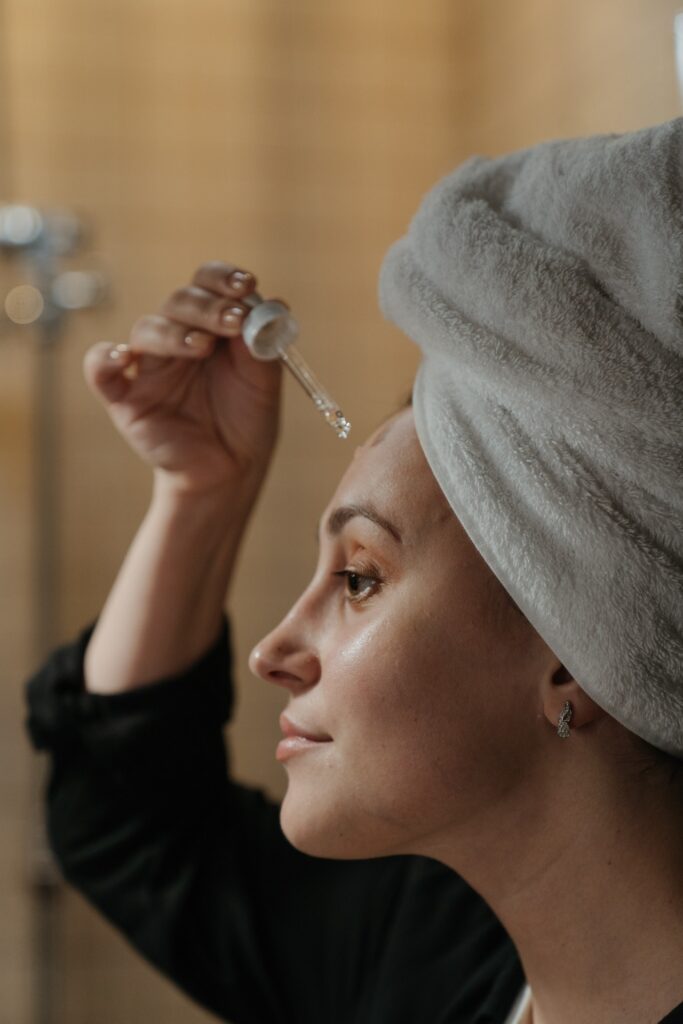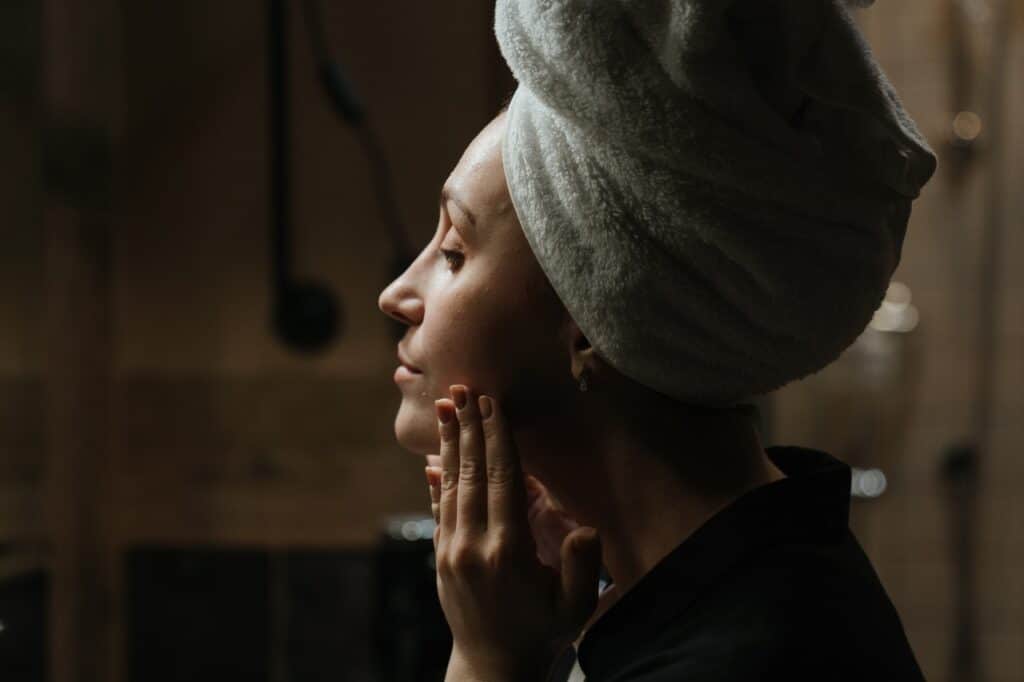Summary: Pure Hyaluronic Acid Serum helps in hydration, protecting the lipid barrier, and proper use of hyaluronic acid serum fills the skin with moisture, tightens the overall skin, and helps firm facial contours.
What is Hyaluronic Acid?
Hyaluronic acid is a macromolecule that is an anionic (does not ionize in water), a sugar called non-sulfated glycosaminoglycan. It is an extracellular matrix (ECM) molecule which means it is found in dermis tissues, in the jelly-like form outside the cells. It can attract and retain water molecules thus our body uses it to keep the skin and connective tissue lubricated, strong, and healthy.
Our bodies naturally have 10 to 20 grams of hyaluronic acid, about half of which is stored in your dermis, skin, to prevent dehydration. Within your skin, it binds to water, helping your skin to stay moist, elastic, and healthy. Other than the skin it is also a part of healthy bones, joints, stomach, and eyes. But hyaluronic acid is most important for healthy skin as nearly half of your body’s hyaluronic acid is found in the skin. Factors like photodamage and normal aging can over time significantly reduce the amount of hyaluronic acid found within your skin.
Hyaluronic acid is widely used as an ingredient in topical skin care products such as creams, masks, and serums. It plays a significant role in helping your skin retain moisture, keeping strong and healthy for protecting your body’s organs from the outside world. This is the reason behind the effectiveness and popularity of hyaluronic acid serums.
Hyaluronic acid plays several important roles in skincare. It contributes to a smooth, firm, and plump looking youthful skin by keeping it hydrated. Lack of hyaluronic acid in the skin can make it appear dehydrated, washed out, and less elastic.
Hyaluronic Acid Serums and Creams Benefits

Hyaluronic acids have also been used as injectable fillers but when used topically, the effects on the skin and results are quite different. Topical use of hyaluronic acid in the form of serums and creams can help to make your facial skin more hydrated and elastic due to its powerful water-binding potential.
A study conducted in 2011 recruited 76 30- to 60-year-old women to use hyaluronic acid of different molecular weight topically for 60 days. It was found that the women using 0.1% hyaluronic acid topical cream showed significant improvements in skin hydration and elasticity.
In 2014 another study recruited a group of 33 women with an average age of 45.2 years. Results reported after using topical nano-hyaluronic acid a significant improvement in the skin hydration and wrinkle depth reduction. Credited to topical nano-hyaluronic acid cream as much as 55 percent improvement in skin firmness and elasticity was seen throughout the study. Improvement was seen as early as two weeks after starting treatment and at eight weeks.
A 2017 study on healthy Japanese men and women between ages 22 to 59 provided evidence that hyaluronic acid works as an anti-aging treatment when taken orally, it inhibits skin wrinkles. Results noted after eight weeks of oral consumption showed a reduction in wrinkle volume ratio.
What Does Hyaluronic Acid Not Do?

In the past year, hyaluronic acid has arisen as a powerful and effective substance used in cosmetic treatments and a magical ingredient in skincare. It is recommended for those with sensitive or acne-prone skin.
However, some of the claimed benefits of hyaluronic acid are merely marketing hoax or completely inaccurate at the best. Others are downright misleading or disproven by real scientific evidence. Thus in addition to its potential benefits for your skin to remove misconception, it is important to uncover what claimed benefits of hyaluronic acid are false and misleading. Scientific evidence indicated that hyaluronic acid does not:
Treat acne.
While adding hyaluronic acid to an acne treatment cream might have some benefits for your skin’s hydration and overall health, there’s no scientific evidence that it plays any role in treating or preventing acne or it will make the products any more effective at treating acne.
Heal scars.
While injectable hyaluronic acid dermal filler can effectively reduce the visibility of acne scars and restore the skin, there’s no scientific evidence that backs the claims of topical hyaluronic acid-reducing or healing acne scars on its own. However, scientific evidence indicates that topical hyaluronic acid can be used alongside aesthetic treatments such as laser skin rejuvenation and microneedling to reduce the visibility of acne scars.
Protect you from the sun.
Several skin care companies encouraging the use of hyaluronic acid for skincare have added it to their sunscreens. While topical hyaluronic acid can help prevent water loss from your skin while under the sun keeping it moisturized, there’s no scientific proof that it protects from the harmful effects of UV rays in the sunlight.
Deliver filler-like results
While Scientific evidence supports that topical use of hyaluronic acid has anti-aging or anti-wrinkle benefits but the results are not as pronounced as fillers. Common anti-aging products contain hyaluronic acid molecules that are too large to penetrate deeply into the skin, meaning topical hyaluronic acid is only really effective on the surface of the skin.
Prevent aging.
Generally, hyaluronic acid is effective anti-agin ingrediant, and using hyaluronic acid creams and other topical products is scientifically linked to better skin. But it’s far from a miracle treatment and it will not solve all of your skincare issues as some products claim. Improvement in visible wrinkles can be achieved with regular use of hyaluronic acid creams, however, like other skincare products, hyaluronic acid can not slow down or prevent aging. It’s can effectivelyreduce the visibility of signs of aging but can not prevent them entirely.
Hyaluronic Acid Serum Side Effects
As your body naturally produces hyaluronic acid, it’s very unlikely to experience any allergic reactions from it. As a topical skincare ingredient in serums, it is well tolerated and overall it is considered very safe to use.
Is Hyaluronic Acid Worth Using?
Undoubtly hyaluronic acid is one of the latest and most popular skincare ingredient trends added in all skincare products from anti-aging creams, masks, and serums, to acne prevention face washes, sunscreen, and more.
Hyaluronic acid is one of the scientifically-proven skin care ingredientsis worth using, if only when it’s used right. If your goal is to diminish fine lines and facial wrinkles and moisturize your skin, using a skin care serum that contains hyaluronic acid can be a great idea. Similarly, if you wish to treat specific lines or wrinkles that you’d like, hyaluronic acid-based fillers can also be a good option.
How to use Hyaluronic acid serum?
For bes results you need to apply it on damp skin. Applying it to a dry face can have the opposite effect of what is intended, and leave skin more dehydrated. Applying hyaluronic acid on a very dry face, can cause it to draw moisture from the deeper levels of your skin, causin more damage than improvement, and leave your skin feeling tight and uncomfortable. While your face is still damp after cleansing, gently pat in a couple of drops into your face with the palms of your hands. To seal in all that hydration, always apply a moisturizer immediately afterward.
How long Hyaluronic acid serum takes to give results?

As all products vary in formulation, difference in molecular weight, combination of ingredients, the result times can vary. However topical hyaluronic acid productscan produce immediate and temporary effects, you should be able to notice plumper, more hydrated skin within a few minutes. When the goal is to reduce the appearance of fine lines, wrinkles and other signs of aging, it may need a consistent application over a couple of months to see visible results.








